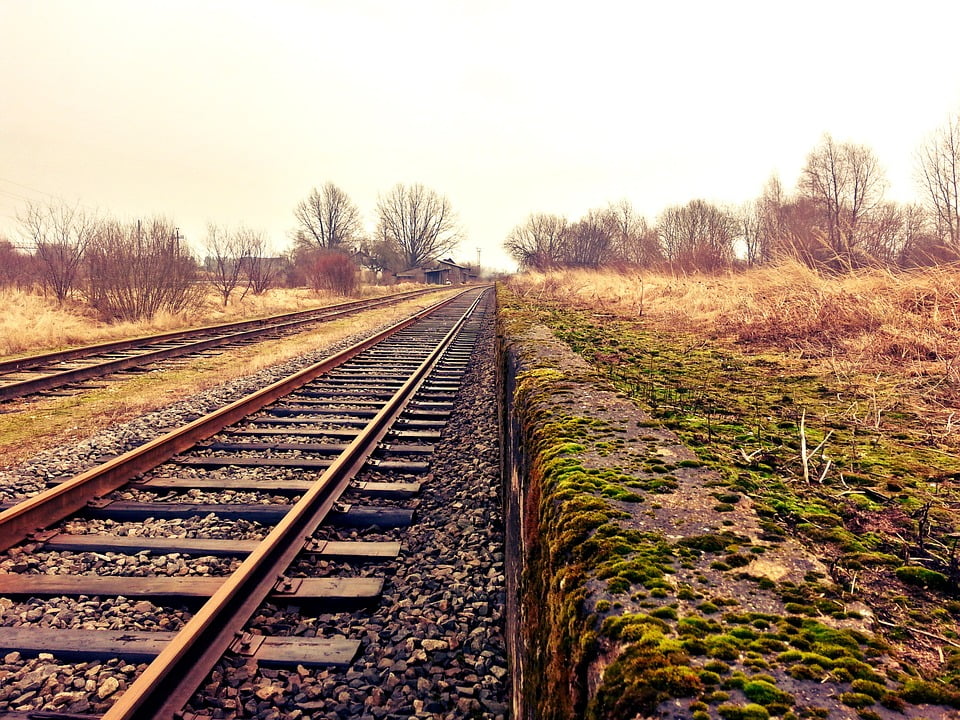

A train travelling slowly or stopped such that the outward centrifugal force is less the effect of the inward applied cant is said to be at 'cant excess'. In this situation there is a net lateral force on the train towards the outside of the curve. A train travelling at line speed such that the outward centrifugal force is greater than the effect of the inward applied cant is said to be at 'cant deficiency'. In this situation there is no net lateral force on the train as the forces inwards and outwards on the curve are balanced. A train travelling at an intermediate speed such that the outward centrifugal force is exactly balanced by the effect of the inward applied cant is said to be at 'balance speed' or 'equilibrium cant'. Therefore, the amount of applied cant on a curve is usually between these two requirements. However, a train that is slow moving, or even stopped, on the curve requires little applied cant. A train travelling at the permitted line speed would benefit from a higher amount of applied cant to counteract its higher centrifugal force as a result of its higher speed. The amount of applied cant to the track is a compromise. In a similar fashion to a motorcyclist leaning into a curve, the inward applied cant of the track counteracts the outward centrifugal force on the train. The purpose of the applied cant is to allow train to negotiate the curve at higher speeds whilst reducing the risk of rollover and reducing discomfort to passengers. The amount of inclination applied to the track is defined by the difference in height between the inner and outer rail, and this height difference is the 'cant' of the curve, often referred to the 'applied cant'. On curves in main line track it is usual to incline the track such that the outer rail in the curve is higher than the inside rail. Also known as 'superelevation' or 'cross level'. The height difference, at a common location, between the running surface of both rails. (The bogie is commonly referred to as a 'truck' in AAR terminology.)ĬOP DIRN Volume 2 'Glossary' and CMC 'Glossary for NCOP and Dictionary of Railway Terminology'.Ī substantial displacement of track from its original design alignment caused by longitudinal thermal stresses overcoming the lateral resistance of the track.ĬMC 'Glossary for NCOP and Dictionary of Railway Terminology'. It may have one, two or more axle sets, and may be the common support of adjacent units of an articulated vehicle.

1, 2008.Ī structure incorporating suspension elements and fitted with wheels and axles, used to support rail vehicles at or near the ends and capable of rotation in the horizontal plane. RailCorp ESG 007 - ‘Glossary of Signalling Terms’, Ver. ballast shoulder width: Width of the shoulder ballast as measured from the sleeper end.ĬMC 'Glossary for NCOP and Dictionary of Railway Terminology'.


ballast shoulder height: Height of the shoulder ballast above the sleeper base as measured at the end of the sleeper. ballast shoulder: The ballast each side of the railway track. ballast resistance: The resistance offered by the ballast, sleepers, etc., to the flow of leakage current from one rail of a track circuit to the other. For steel sleepers the base of the sleeper is considered to be the sleeper toe. ballast depth: Distance from the formation to the base of the sleeper measured below the lowest rail seat. Stone or aggregate material spread on the ground for the purpose of holding the track in line laterally and longitudinally and also to provide drainage.


 0 kommentar(er)
0 kommentar(er)
